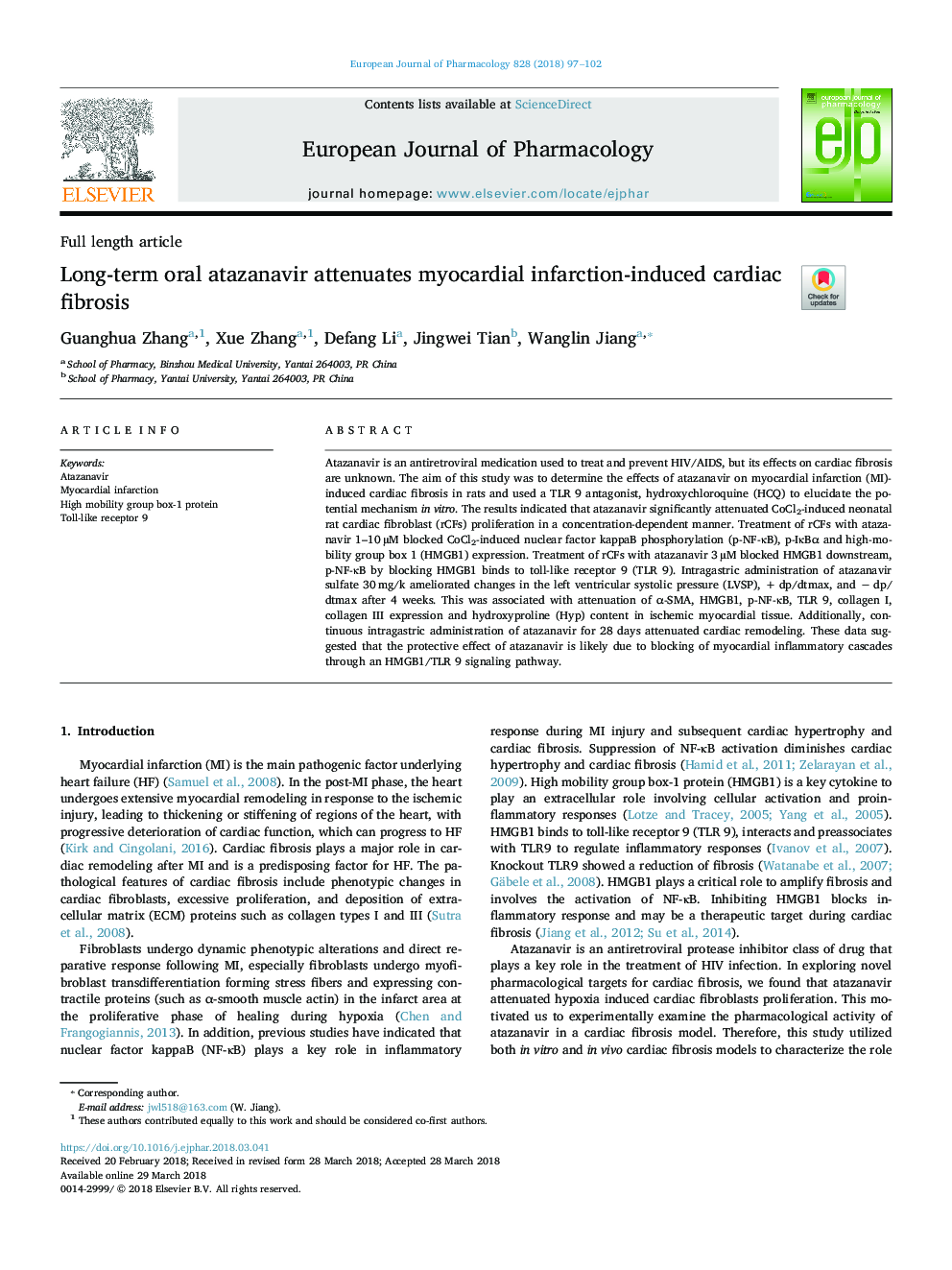| کد مقاله | کد نشریه | سال انتشار | مقاله انگلیسی | نسخه تمام متن |
|---|---|---|---|---|
| 8529100 | 1558852 | 2018 | 6 صفحه PDF | دانلود رایگان |
عنوان انگلیسی مقاله ISI
Long-term oral atazanavir attenuates myocardial infarction-induced cardiac fibrosis
ترجمه فارسی عنوان
آتاازانویور خوراکی دراز مدت فیبروز قلب را ناشی از انفارکتوس میوکارد کاهش می دهد
دانلود مقاله + سفارش ترجمه
دانلود مقاله ISI انگلیسی
رایگان برای ایرانیان
کلمات کلیدی
موضوعات مرتبط
علوم زیستی و بیوفناوری
علم عصب شناسی
علوم اعصاب سلولی و مولکولی
چکیده انگلیسی
Atazanavir is an antiretroviral medication used to treat and prevent HIV/AIDS, but its effects on cardiac fibrosis are unknown. The aim of this study was to determine the effects of atazanavir on myocardial infarction (MI)-induced cardiac fibrosis in rats and used a TLR 9 antagonist, hydroxychloroquine (HCQ) to elucidate the potential mechanism in vitro. The results indicated that atazanavir significantly attenuated CoCl2-induced neonatal rat cardiac fibroblast (rCFs) proliferation in a concentration-dependent manner. Treatment of rCFs with atazanavir 1-10â¯ÂµM blocked CoCl2-induced nuclear factor kappaB phosphorylation (p-NF-κB), p-IκBα and high-mobility group box 1 (HMGB1) expression. Treatment of rCFs with atazanavir 3â¯ÂµM blocked HMGB1 downstream, p-NF-κB by blocking HMGB1 binds to toll-like receptor 9 (TLR 9). Intragastric administration of atazanavir sulfate 30â¯mg/k ameliorated changes in the left ventricular systolic pressure (LVSP), +â¯dp/dtmax, and ââ¯dp/dtmax after 4 weeks. This was associated with attenuation of α-SMA, HMGB1, p-NF-κB, TLR 9, collagen I, collagen III expression and hydroxyproline (Hyp) content in ischemic myocardial tissue. Additionally, continuous intragastric administration of atazanavir for 28 days attenuated cardiac remodeling. These data suggested that the protective effect of atazanavir is likely due to blocking of myocardial inflammatory cascades through an HMGB1/TLR 9 signaling pathway.
ناشر
Database: Elsevier - ScienceDirect (ساینس دایرکت)
Journal: European Journal of Pharmacology - Volume 828, 5 June 2018, Pages 97-102
Journal: European Journal of Pharmacology - Volume 828, 5 June 2018, Pages 97-102
نویسندگان
Guanghua Zhang, Xue Zhang, Defang Li, Jingwei Tian, Wanglin Jiang,
